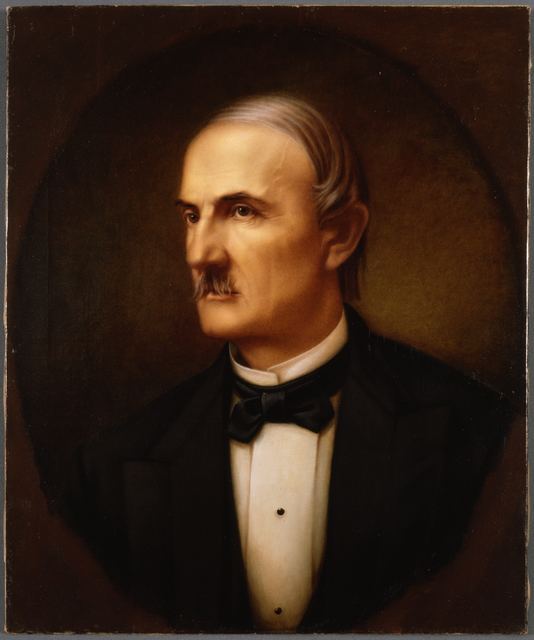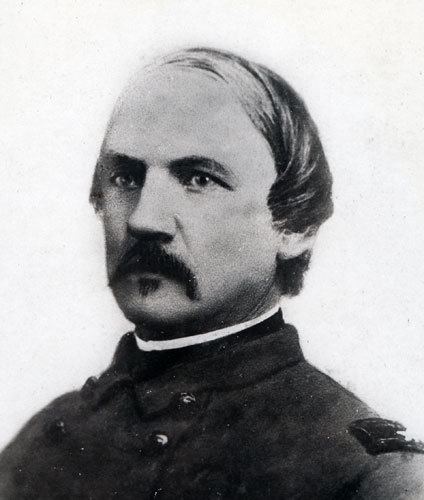Preceded by John H. Tweedy Name Henry Sibley | Preceded by New district Succeeded by Henry Mower Rice | |
 | ||
Preceded by Samuel Medaryas Territorial Governor Previous office Governor of Minnesota (1858–1860) Books Iron Face: The Adventures of Jack Frazer, Frontier Warrior, Scout, and Hunter Similar People Little Crow, Alexander Ramsey, Inkpaduta, John Pope, Sitting Bull | ||
Biographer Rhoda Gilman talks Henry Hastings Sibley
Henry Hastings Sibley (February 20, 1811 – February 18, 1891) was the first Governor of the U.S. state of Minnesota and a U.S. Representative of the Minnesota Territory and the Wisconsin Territory.
Contents
- Biographer Rhoda Gilman talks Henry Hastings Sibley
- Early life and education
- Career
- Marriage and family
- Political career
- Railroad bond issue
- Military career
- Post military career
- Legacy and honors
- References

Early life and education

Henry Hastings Sibley was born in Detroit, where his parents, Solomon Sibley (1769–1846), a native of Sutton, Massachusetts, and Sarah Whipple (Sproat) Sibley had moved in 1797. It was part of a major westward migration after the American Revolutionary War by New Englanders. Solomon Sibley became a prominent judge in the early history of the city and state. He was of entirely English ancestry, all of which had been in North America since the early 1600s.
As a young man, Henry Sibley read about and studied law in his father's office to prepare for the bar and licensing.
Career
In 1828, the young Sibley started as a clerk at a mercantile house in Sault Ste. Marie, a prominent fur trading center on both the United States and Canadian sides. From 1829–1834, he worked as a supply-purchasing agent of the American Fur Company at Mackinac. In 1834, Sibley became a partner in the company and relocated to their headquarters in St. Peter's (now called Mendota), Minnesota. He lived there from 1834–1862.
Marriage and family
In 1836, Sibley built the first stone house in Minnesota, which is now the Sibley House Historic Site. The home, in Mendota, overlooked Fort Snelling from across the Mississippi River. Over the winter of 1839–40 he entered a de facto marriage with Red Blanket Woman, granddaughter of a Mdewakanton Dakota chief; a daughter, Helen Hastings Sibley, also known as Wahkiyee (Bird), was born in August 1841. The circumstances of Sibley and Red Blanket Woman's relationship are obscure, but several sources suggest that she remarried a Dakota man, perhaps in 1842, and died in early 1843.
On May 2, 1843, Sibley married Sarah Jane Steele, daughter of General James Steele, commander of Fort Snelling, and his wife Mary (Hume). Sarah Jane's brother was Franklin Steele, a prominent Minneapolis businessman, and her sister Anna Abby Steele married Dr. Thomas R. Potts, who later became the first mayor of St. Paul, Minnesota. For her part, Helen was eventually placed with a missionary family and grew up acculturated to white society in St. Paul; Sibley maintained a congenial and public relationship with Helen until her death in 1859, although this reportedly upset Sarah.
The political boundaries changed so frequently from 1836 through 1862 that, although all of Sibley's white children were born in this house, they were each recorded as having been born in different political units: Michigan, Wisconsin, Iowa, Minnesota Territory and finally, the state of Minnesota. In 1862, the Sibley family moved to St. Paul.
Political career
Sibley started his public career shortly after the organization of Iowa Territory, receiving a commission as Justice of the Peace of Clay County by governor John Chambers. He received commissions and extensions to his commission in 1838, 1839 and 1840.
Sibley's political life began when he was elected to represent Wisconsin Territory to the 30th United States Congress in an unusual organizational vacuum after Wisconsin became a state on May 29, 1848. His election was mandated to fill the vacancy caused by the resignation of John H. Tweedy. He took over as the Wisconsin Territory At-large congressional district representative on October 30, 1848, although he was not recognized to be seated until the subsequent January. The Wisconsin Territory's At-large congressional district was eliminated with the creation of the Territory of Minnesota on March 3, 1849. He was subsequently elected as the first representative of the Minnesota Territory's At-large congressional district, serving in the 31st and 32nd congresses from July 7, 1849 – March 3, 1853.
Sibley was elected to the Minnesota Territorial House of Representatives, convened from January to March 1855, as the representative of Dakota County. He was a member of the Democratic Party wing of the first Minnesota Constitutional Convention, of which he eventually became president. Assembled July 13, 1857, the convention resulted in adoption of the constitution as framed on October 13, 1857.
In 1858 Sibley was elected as the first governor of the state, and is one of just four Minnesota Democrats to win a gubernatorial election with a Democrat in the White House. He served from May 24, 1858, until January 2, 1860. After narrowly defeating Republican Alexander Ramsey in the first state gubernatorial contest, Sibley declared in his inaugural address, "I have no object and no interests which are not inseparably bound up with the welfare of the state." He did not seek reelection.
Railroad bond issue
When the legislature voted for the state to issue bonds to the railroads to provide for construction of the transcontinental route, Sibley refused. He said the railroads did not give priority of lien to the state on their property. The state supreme court ordered the governor to issue the legislatively authorized state bonds to railroads. The legislature asked him to market the bonds in New York. Although he made an effort to do, the capitalists refused to buy the bonds. The state subsequently repudiated the issuance.
Military career
The U.S. Dakota War of 1862
In 1862, after the American Civil War began, Sibley was appointed colonel of the state militia. He was directed to the upper Minnesota River to protect exposed settlements from the Sioux American Indians. After the massacre at Acton, August 18, 1862, he was involved in the following engagements:
The last engagement was a decisive battle. It resulted in Sioux bands' releasing about 250 captive whites. In the action, the militia captured 2,000 Sioux, both men and women. Of these captives, 321 warriors were tried for capital crimes and 303 were sentenced to death. It was a "kangaroo court" with no lawyers for the defendants. Some of the "trials" lasted only a few minutes. Thirty-eight men were hanged at Mankato, December 26, 1862, including at least one whose sentence had been commuted by President Lincoln.
For gallantry in the field, Sibley was promoted to brigadier-general of volunteers, September 29, 1862. In 1863, he led a second successful expedition against the Sioux in Dakota Territory. This campaign included the battles of Big Mound (July 24), Dead Buffalo Lake (July 26), and Stony Lake (July 28).
Sibley continued to defend the western frontier, 1864–1865. On November 29, 1865, he was brevetted as major-general of the volunteers for "efficient and meritorious services." He was relieved from the command of the district of Minnesota in August 1866 after the end of the American Civil War.
Post-military career
After his military service, Sibley was active in settling several Indian treaties. Upon reentering business life in St. Paul, he served as president of the chamber of commerce, as well as the president of several railroads, banks, and other large corporations.
He also served a variety of civil organizations. He became a member of the Minnesota Historical Society in 1849 and eventually served as president. He joined the Old Settlers' association of that state in 1858. He contributed to the collections of the Minnesota Historical Society, to Spirit of the Times, and to The Turf, Field and Farm. Among his work for the Minnesota Historical Society were memoirs of Joseph Nicolas Nicollet, Hercules L. Dousman and Jean Baptiste Faribault.
He died in St. Paul, Minnesota on February 18, 1891, two days before his 80th birthday and is buried in Oakland Cemetery in St. Paul.
